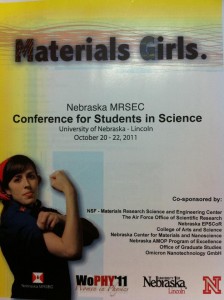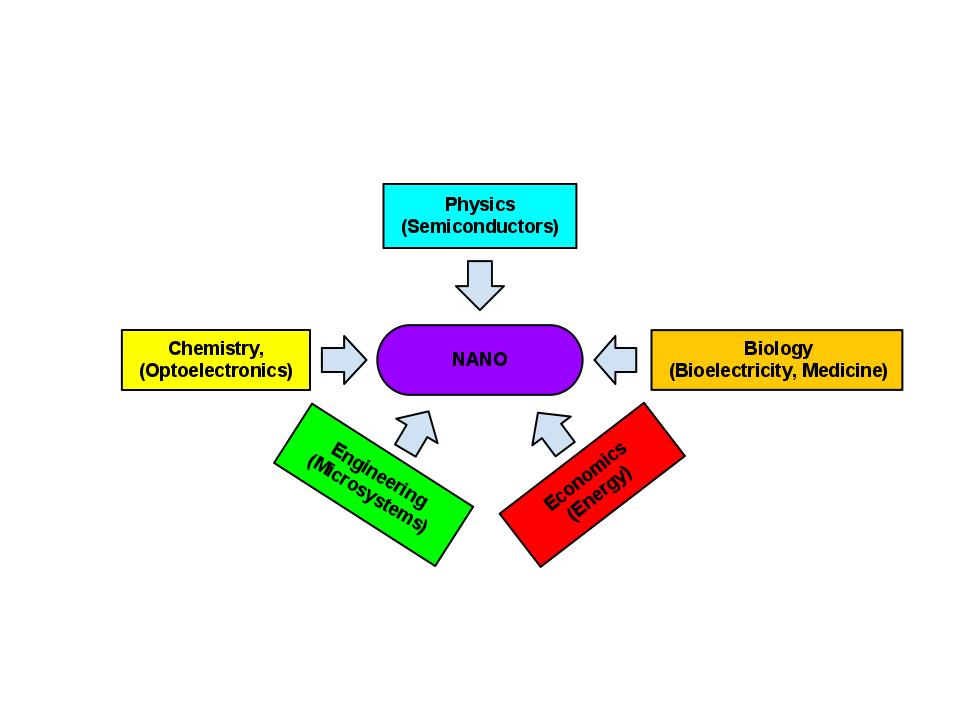
Last week I was fortunate to be able to attend about half of WoPhy11. Meeting all the fantastic undergraduate researchers in Physics was a bit intimidating, they’re all so driven and their projects, may of them self-designed, have the potential to impact millions. A friend suggested I blog a few of the sessions that I was able to attend. I was writing rather quickly so you should assume that I’m paraphrasing liberally unless otherwise indicated.
*Disclaimer – I am a physical chemist not a physicist, any mistakes should be attributed to my note taking and not the presenters.
Practical Quantum Mechanics: Semi-Conductor Materials for Mid-Infrared Laser
Linda Olafsen, Professor of Physics, Baylor University (Creates finite quantum wells.)
Important Points:
Researches lasers to defend ourselves from laser weapons.
Quantum Mechanics is very practical!
We want lasers that are on all the time, not pulsing.
We also want devices that we don’t need to cool with liquid nitrogen tanks, currently they’re not very practical to carry around.
Did you know?
Lasers can be used to test breath as an early Asthma detection system.
Lasers could be use to decoy off heat seeking missiles.
Computational Materials Science: Designing Materials from First Principles
Julia E Medvedeva, Professor of Physics, Missouri University of Science and Technology
(Computational physics).
Materials are all around us. We want materials to be: safe, lightweight, efficient, strong, durable, small, and eco-friendly. Using simulations we can study materials and optimize them before we spend thousands of dollars fabricating and testing them. Much of the wok in this field is being done by corporations not academia.
Before we had to start with the composition and atomic arrangement and try to create the physical properties we needed. Now we can start with the physical properties and design materials based on our needs saving time and money on experimentation. We can also model situations which are impossible to create experimentally. Because we can control all of the parameters we can determine whether the driving forces are: charge, spin, or orbital degrees of freedom.
While computational physics is a valuable tool it is important to remember that computer modeling is not a Simulation of Reality, rather an accurate computation of relevant quantities to prove or disprove a theory.
Computers don’t solve problems, People Do!
Timeline of Ab-Initio Modeling
1960s — Bulk Material Calculations
1970s — Defects and Impuraties calculations allow optimization of materials.
1980s — Interfaces, Surfaces, & Thin Layers calculations (diff. properties than bulk materials.)
1990s — Simple Molecules (Fullerenes, clathrates, carbon nanotubes).
2000s — Polymers
Now we can study structural, energetic, electronic, optical and magnetic properties of any element, any bonding situation, periodic structures, and single molecules. These calculations have a high accuracy rate allowing greater variations in system size to be addressed than was previously possible.

Nanotechnology and Materials Science
Heike Geisler Professor of Nanoscale Science & Engineering, University at Albany- SUNY
Nanotechnology is the fundamental student of materials on the nanoscale measuring 1nm-100nm in one or more dimensions.
Physical and chemical properties are totally different on this scale due to the increased surface to volume ratio. Possible uses include Roll to Roll production of ultra large scale graphene films could be used to make ultra-light and durable laptops.
The illustration is based off of a slide which demonstrated how nanotechnology crosses many disciplinary boundaries. Economics is not an obvious match, but the point was made that the cost, or energy, to achieve a goal is an important factor in determining what nanotechnologies are commercially viable.

